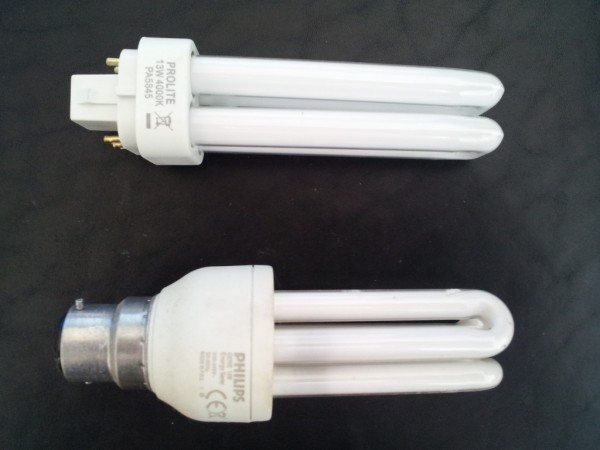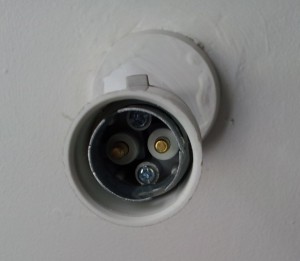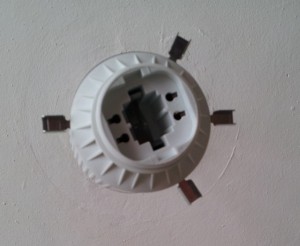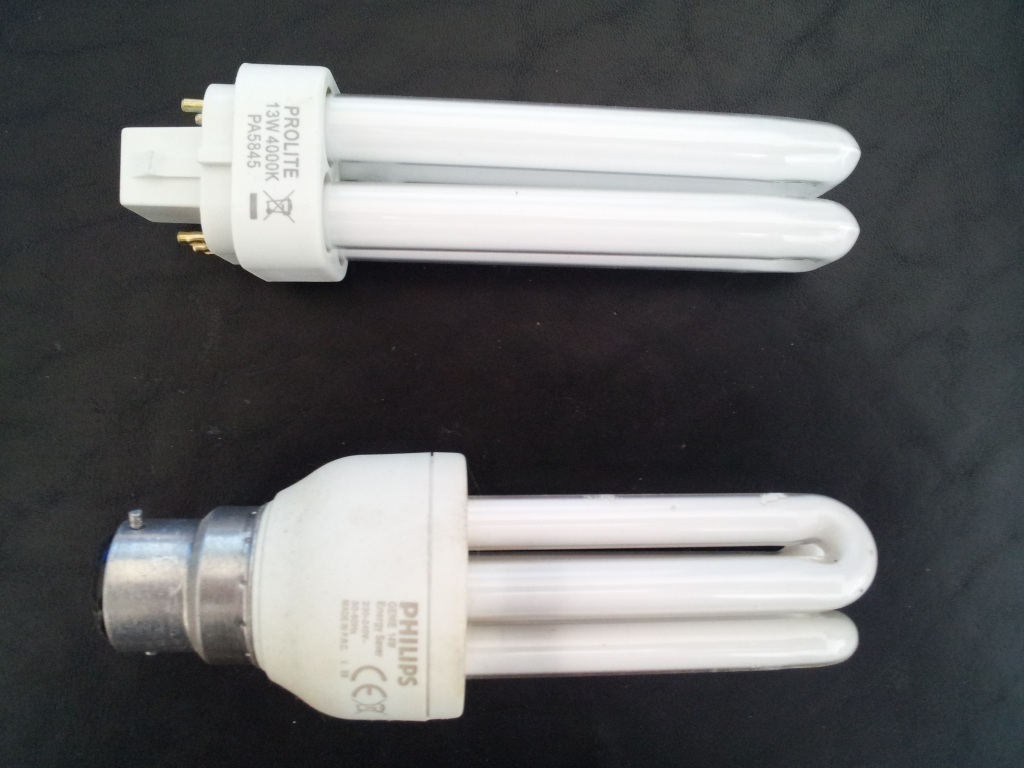I’m annoyed.
OK, I am often annoyed. But I am currently annoyed about one thing in particular. PL Lamps.
You’re probably thinking this is an obscure technical thing and are about to stop reading and go and look at something else, but please, stick with me. I’m going to tell you how the government are imposing their choices on you and costing you more money for very little gain. (OK, skip to the last paragraph if you really must!)

This all stems from a desire to phase out the use of traditional incandescent light bulbs in the interests of energy efficiency. It is an objective that I for the most part agree with. Incandescent light bulbs are grossly inefficient, turning the vast majority of the electricity that they consume into heat rather than light. Modern LED or Fluorescent light bulbs are far more efficient. For example, a 100w traditional light bulb can usually be replaced by a 20w compact fluorescent lamp, using a fifth of the electricity.
While I agree that it is necessary for the population to switch to more efficient lighting in order to reduce our energy usage (both because we are running out of fossil fuels and because we need to address climate change) I generally disagree with behaviour being forced on the general public by the government, and I disagree with the government’s policy of forcing people to switch by banning incandescent bulbs. There are plenty of situations in which a compact fluorescent lamp or an LED lamp is not suitable - many people suffer from or migraines or other health problems that can be made worse by fluorescent lighting - and the option of an incandescent lamp should be available, although hopefully rarely used.
That’s all just background though. Most traditional light bulbs for home use have been banned from sale. The country is switching to compact fluorescent lamps as the readily available alternative. These lamps are now cheap enough for widespread use. They are fitted with the same bayonet socket that our traditional light bulbs used to go in, so it really is just a matter of disposing of the old bulb and fitting the new one. It is also possible to fit other types of lamp, for example LED lamps which are a lesser-used but potentially better technology than CFL.

That choice is something that is being taken away. My housing association is having work carried out on my flat. As well as a new kitchen, they are carrying out some electrical work to make the flat meet the same new building regulations as for new houses, including replacing the aged fuse box, adding some more power sockets, and replacing the light fittings. It’s this last item that has made me angry. For decades most light fittings in the UK have used the B22d bayonet socket. It’s standard. You just buy a light bulb, it uses that socket. If you buy a compact fluorescent lamp, or an LED lamp, it uses that socket. If you buy a sound-activated switch, or a remote control switch, or a timer, that goes between bulb and light fitting, it uses that socket. Not any more. You see, in new buildings, the regulations now demand that at least a third of the light fittings in the building are made to only accept low energy light bulbs.
It is easy for the government to demand a socket that “must accept only low energy light bulbs” but implementing it is a different story. A standard socket simply carries electricity over two wires and supplies it to the lamp. You can make the socket any shape or size that you want, but it would still have to have those same two wires. Given that, any kind of lamp can be adapted to fit the socket, be it incandescent, fluorescent or something else. It would be trivial for an enterprising manufacturer to make an adapter to connect a traditional light bulb, or even design an incandescent bulb to fit the new socket.
So in practice, the socket must supply a different kind of electricity so that conventional bulbs cannot be used. Fluorescent lamps provide an answer to this problem. Compact fluorescent lamps actually contain two parts - the lamp tube itself, and the electronic circuitry that converts electricity to the necessary frequency and voltage to drive the lamp. While we have settled on the practice of including both parts in one unit, some manufacturers also produce a light fitting that has the circuitry built in, and the lamp fitting contains only the fluorescent tube. This means the light fitting and lamp will only work with each other. The perfect solution to the government’s demands.

The problem is that since there is only one simple solution to comply with the legislation, the government has effectively forced a specific technology on everyone. They have also imposed the associated costs which accompany that technology, with both the light fitting and the replacement lamp being more expensive than the standard items. Not only that, but the power output of the lamp is determined by the socket, not the lamp, so that I can now have only a 13 watt light in my living room. Since the socket is entirely different a new lampshade will often be necessary too. How many people know to look for a lampshade to fit a PL socket instead of a bayonet socket? Not many, I suspect.
I am torn on this legislation, and on the whole idea of the government imposing certain solutions and behaviour on people. For the most part I believe that the government should not be able to do this, but I also want some things to go in a direction that they won’t go without government intervention. I strongly resent the government using “Nudge theory” on us, and I’m not particularly enamoured of them deciding to tax some things purely because the government does not approve of their use. Especially so since taxing something to reduce usage will only deter the poor and not the rich, who may not even notice the difference.
What do you think? Should the government impose some behaviour or solutions on us? Which ones? How?

